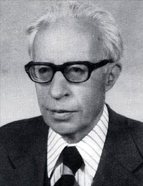

e) In historicizing the idea of the ‘essay’ and the praxis of the essay, not as a literary ‘genre’ but as a way of philosophizing, Sílvio Lima establishes the diachronism of critical rationalism and the real genealogy of the concept of liberty, since it is thinking that makes the being free (idem, p. 1308). It could be said he rewrote an ample chapter of the history of ideas that he had researched with clear results in 1927 and 1928. By exploring the Cartesian principle of uncertainty, the accidental and the contingent, and the gnosiological assumption of doubt, in debating the normative logic in the critical analysis of historiography, he invalidates the systematic panlogism (dogmapatia) and the ‘hidden circularities’ (normapatia) of the end of History, restoring the relativist indifference towards prognostic logic (and ensuing ideological syntaxes) that in speculative nexuses of causality or sequence deduce logical links that the logicality of a historiographical episteme does not support. He summarizes this in 1943, writing that ‘the physis of Newton and Laplace is not … human nature; the brute masses gravitating in space are not … the men on the stage of Life and History’. An important lesson that he will theorize in the 1950s.
f) The secularization of the functioning of critical historiography and of all intellectual and scientific labour, drawing on the exemplary work of Herculano, is solidly endorsed by Sílvio Lima in Notas críticas ao Livro do Sr. Cardeal Gonçalves Cerejeira ‘A Igreja e o Pensamento Contemporâneo’ — generating the last religious polemic before the 25 April — by supporting a very close documentary examination of the sources that reveals a historical analysis of the inter- and intra-confessional conflicts, when, within a single religion, sects and orthodoxies oppose one another. Even today, they are brilliant pages for those concerned with the history of religious ideas and of civil intolerance, or with those cults and manifestations of heterodoxy within a society in which ‘the Inquisition, burning [at the stake], religious censorship, in a word, the Counter-reformation was sacrificing its expression’. Refuting arguments that take dogma and subjective faith as facts, and religious belief as scientific authority, Sílvio Lima, following in the footsteps of Herculano, dismisses their retrospective and omniscient illusion, staking out History according to internal and external criteria of logic and rationalism, through heuristic and hermeneutic dialogue, as a knowledge based on verifiable presuppositions and methodologies, but not on unequivocal and indisputable results (idem, pp. 411–25).
